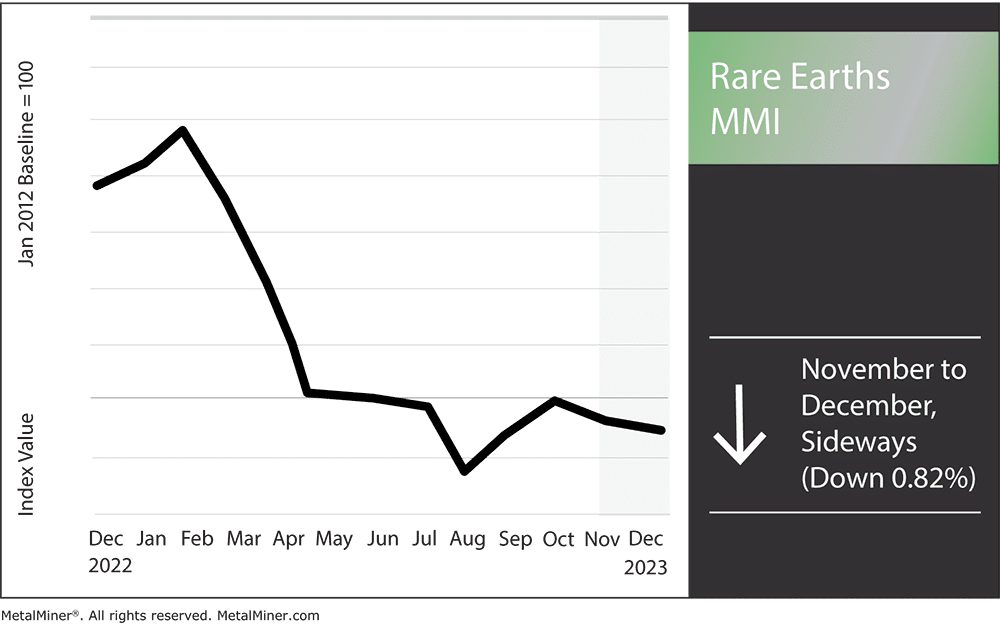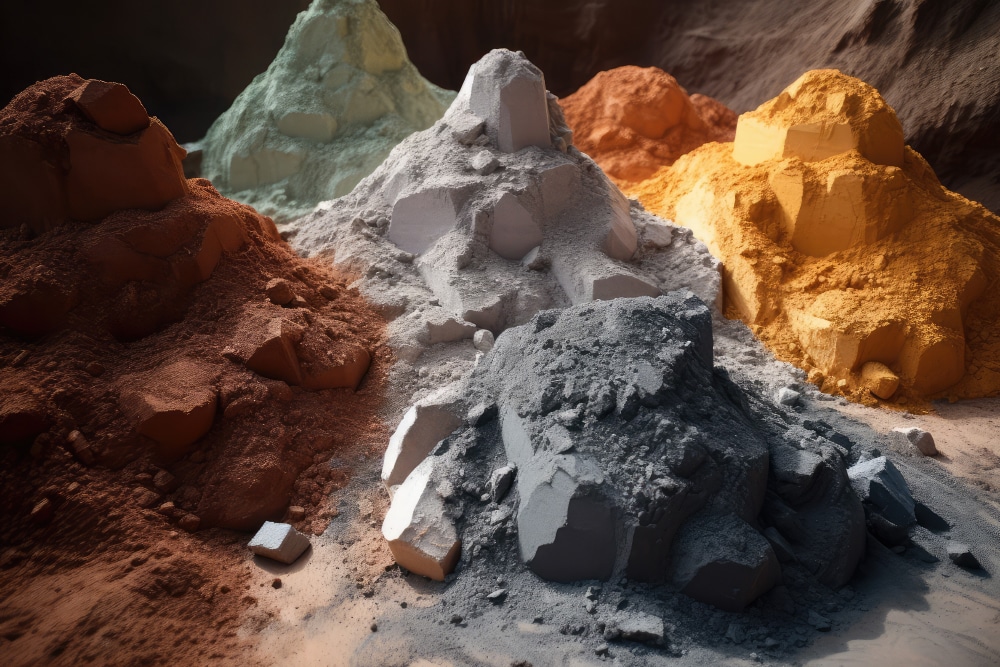The global rare earth magnets game continues to heat up. Indeed, China, the top global rare earths supplier, seems eager to tighten its hold on the marketplace, especially with trade tensions rising between the country and the West. Meanwhile, the U.S., Australia, and many other nations continue to look for homegrown solutions to rare earths sourcing. These efforts could put bullish pressure on the index in the long term. As for this past month, the Rare Earths MMI (Monthly Metals Index) continued to move sideways, only dropping down 0.82%
No procurement department should go without these last-minute 2024 tips and tricks we’re presenting next week in our December fireside chat: Last-Minute 2024 Market Intel & Strategies

Australia and the West Challenge China Rare Earths Market
A recent Reuter’s article discussed how a number of crucial mineral explorers from Canada, Germany, and Australia aim to end China’s monopoly on rare earth metals. Currently, China produces 95% of all rare earths, giving the country significant leverage to restrict exports and set pricing. This comes at a time when encouraging home production of vital metals is at a fever pitch.
Australia, Canada, and Germany are not the only nations concerned about Chinese dominance over rare earth minerals. Indeed, many analysts continue to sound the alarm about the potential for a trade war over rare earth magnets and materials due to the ongoing U.S. – China trade dispute. Given its reliance on China for rare earths, the U.S. is highly susceptible to interruptions in supply. The growing concern remains that China could exploit its dominant position in the rare earths game as a negotiating method in the trade dispute amid the growing tensions.
Will a Trade War Happen?
In reaction to the rising tensions, China continues to flex its economic might. For instance, the country recently imposed export licensing rules on important commodities like rare earths and graphite.

Meanwhile, the U.S. government continues to work to find alternate sources of supply and revitalize its own rare earth mining sector. The primary goal of these efforts is to lessen the United States’ reliance on Chinese minerals. However, these initiatives are still in their infancy, and the U.S. is still mostly dependent on imports from China.
Overall, the U.S. and the rest of the world economy remain very concerned about the potential for a trade war over rare earth materials. Indeed, such a conflict could result in scarcer supplies and increased costs for rare earth magnets, which would affect the manufacturing of many different high-tech goods.
Subscribe to MetalMiner’s free Monthly Metals Index report and leverage it as a valuable resource for tracking and predicting rare earth prices and price trends.
Rare Earths Magnets as an Investment Safe Haven
The increased demand for rare earth metals brought about by the global green energy transition makes them a topic of study in both geopolitical and economic circles. That said, the use of rare earths for a safe-haven flow is often called into question due to shifting macroeconomic conditions and geopolitical concerns. The recent conflict in Israel is a perfect example of this.
According to a study published in ScienceDirect that examined the economic ramifications of these tensions on rare earth metals, geopolitical disruptions hold the potential to substantially impact the global supply chain of these elements.

The mere fact that China is the market’s leading supplier of rare earth highlights the geopolitical significance of these elements. For instance, rising domestic demand could undermine China’s dominance by encouraging increased production outside of , AZ CCP boundaries. An additional factor contributing to global concerns is the anticipated shortage of rare earth elements and other metals due to the ongoing energy transition.
For the U.S. and its allies, the possible loss of access to these resources may have grave negative effects on the military, economy, and politics.
Start saving on COGS. Explore MetalMiner’s full metal catalog and start getting metal price forecasts customized to your specific metal types and forms.
Rare Earth Magnets, Elements and Other Price Shifts
- Praseodymium oxide decreased by 4.56%, leaving prices at $66,732.51 per metric ton.
- Rare earth carbonate followed suit, dropping by 4.63%. This brought prices to $5,403.50 per metric ton.
- Lanthanum oxide saw a significant 10.69% drop, leaving prices at $536.12 per metric ton
- Finally, terbium metal dropped by 3.76%, leaving prices at $1,368.51 per kilogram.



